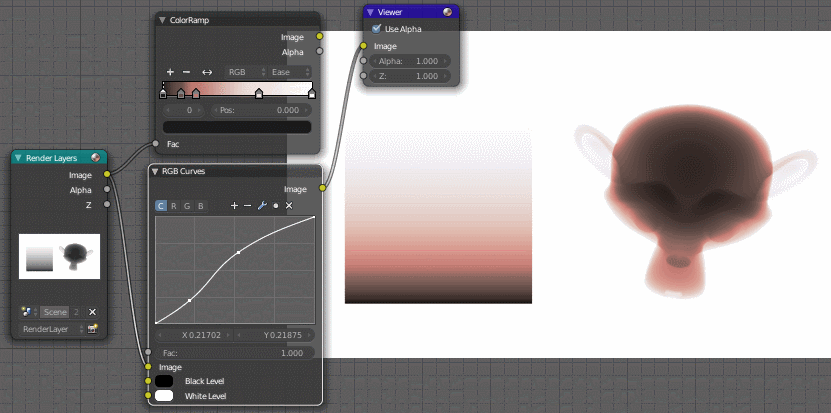I understand that both of them convert color values, but how are they different/similar? In other words, what are examples of situations where one would be better than the other? I understand more or less how the RGB curves work on a technical level (converts X input to Y output) but I'm less sure about color ramps. I have also seen people matching RGB curves to the information found on refractiveindex.info for realistic materials but I'm really not sure as to how this work (I could make a separate question for this if necessary).
1 Answer
They are different tools for doing the same things in different ways.
Color Ramp
- Easier to precisely set colors and stops
- Harder to make custom falloffs/interpolations
RGB Curves
- Easier to make your own falloffs/distributions
- Harder to specify exact colors
As an example, I attempted to replicate the result of an RGB curve setup with a color ramp node. Note the differences around the transitions due to the color ramp interpolation:

I used the compositor for this, but they work the same in Cycles
Which you use depends largely on what you want to do and what your preference is. I tend to use color ramps for precision stuff, and curves for more artistic things.
